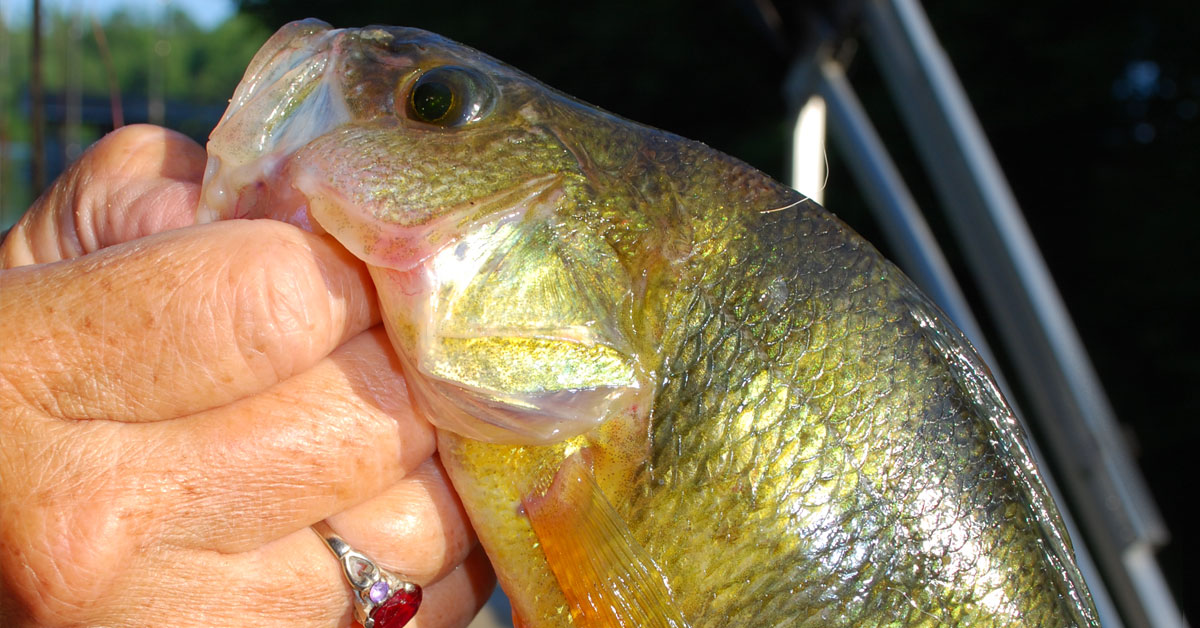
Do gamefish like this yellow perch feed more heavily with the advent of autumn?
By Bruce Ingram
Photos by Bruce Ingram
Come fall, Virginia’s gamefish go on feeding frenzies as they try to put on weight before the hard times of winter begins. At least that’s what many state anglers believe. But is that belief a fact or fake news? Veteran DWR fisheries biologist John Odenkirk weighs in.
“People do like to talk about the fall feeding frenzy,” he says. “Innately, it would seem that the fish would want to eat more in the autumn before the colder water of winter decreases their activity.

Was this New River smallmouth caught because it was participating in the fall feeding frenzy – or was it active because conditions were right?
“However, if the fall feeding frenzy were something that could be or had been documented, it likely would have been published in the scientific literature. And I have not seen anything in that regard. I have seen fall days on the water when the fish were extremely active, but was that just the randomness of visiting a fishery at just the right time?”
Like many anglers, Odenkirk has witnessed extremely active bass, stripers, and other species feeding ravenously in the spring and summer months. How are those feeding frenzies different from the ones observed in the autumn period? After all, aren’t gamefish always – at any season – instinctively wanting to consume as much food as possible? That is, of course, how fish stay alive.
Fish can even forage very aggressively in the winter. For example, a warm, overcast January afternoon when the water temperature rises three or four degrees can cause fish to feed heavily – relatively speaking – for an hour or even two. Odenkirk adds that frontal conditions at any time of the year can also spur feeding activity.
“An impending strong cold front can spur ravenous behavior almost any time as the barometer begins to fall,” he says. “However, it is certain juvenile fish need adequate biomass to survive their first winter; and if a fall feeding frenzy is the ticket for survival, then so be it.”
Takeaway thoughts? Go fishing whenever you can; pay attention to frontal conditions, cloud cover, and air and water temperatures; and change and adapt your game plan as necessary.

Fall float fishing on the New River below Claytor Lake Dam.


